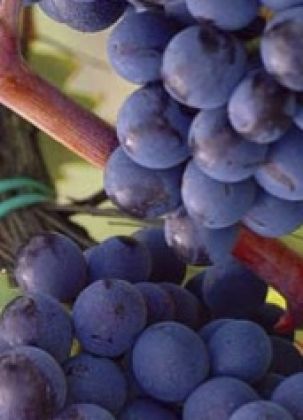Wine always reminds me of my grandfather. I can’t remember the first time I tasted wine, but fuzzy memories aside, I can say for certain that it was probably at my grandparents’ house. The red wine was heavily diluted with ginger ale, and the wine itself was homemade by nonno. Wine has always been at the centre of our family cosmology, whether sneaking wine from the table without adults noticing when I was a teen, or making my own wine with my husband as a married adult.
My foray into the world of winemaking began in 2005, sadly with a family medical emergency when nonno had a mild stroke and was hospitalized for the duration of his recovery. Strokes are traumatic and catastrophic enough on their own, but his stroke unfortunately also occurred a few days before he planned to press his grapes for wine. Under these circumstances, logic would dictate that we should have simply forgotten about the grapes and the wine. However, this is not how my family thinks. During my first visit to see him in the hospital, while I was holding back tears of relief that he was okay, he insisted that the rest of us press the grapes and make the wine in his place. Having recently seen the grape-stomping scene in the movie A Walk in the Clouds, my first question was whether or not I could crush the grapes with my feet. Absurd as it may seem, I immediately pictured myself in full folk costume, complete with un fazzoletto on my head, crushing grapes with my feet, while dancing the tarantella. While those thoughts were quickly crushed by everyone in the room, nonno quietly whispered in my ear, “If I’m alive next year, you can crush grapes with your feet, no matter what your grandmother says.”
I quickly responded, “Not ‘if you’re alive’… We will crush grapes with my feet next year.” With those words, our resolve strengthened – in the next year he would get better so I could stomp some grapes.
A few days later, my father and I gathered with my grandmother and a few other family members to crush the grapes nonno had bought. I hadn’t taken part in winemaking since I was a little girl, so the whole experience was almost entirely new to me. Nonno is die-hard vintner, so there was none of that pre-pressed mosto. When we entered the garage, we were greeted by dozens of crates containing hand-picked grapes. The air was thick with the sickeningly sweet scent of very ripe fruit. I couldn’t help but feel overwhelmed by the scene. How did my grandfather, who was in his eighties, do this by himself every year? For the next two days we pressed and crushed grapes until there was no juice left in them. It wasn’t pleasant work but none of us complained.
Fast forward to the summer of 2011, and there I was, recently married and living in rural Cape Breton in an old farmhouse, doing research for my doctoral dissertation. My husband and I had been toying with the idea of making wine for years, but our cramped apartment in St John’s was not suitable for such an endeavour. With all the space we had this summer, we decided to try our hands at being vintners. I’m lucky to have a husband who has so enthusiastically taken part in various Italian food traditions with me – one fall we canned tomatoes in our kitchen, not because it was cheaper than buying pre-canned tomatoes, but because it was tradition. Living in Newfoundland, our canning adventures cost us a small fortune since we had to buy each tomato individually but we did it anyway. We only made a dozen jars but when we used those cans for special occasions, they made the best sauce we’ve ever tasted. He also makes sausages from scratch using sausage casings nonno packs in salt and sends us home with whenever we visit Montreal. The first thing my husband did when he met my grandparents was ask them to teach him how to properly cook Italian food, which meant nonno bought a pig’s leg to make sausages and nonna taught him how to make cavatelli. Yes, you read correctly – my Cape Breton-born Scottish-Irish husband can make cavatelli and sausages with the best of them – he’s an Italian nonna in disguise.
Given this, it was really no surprise that we decided to try making wine. Sadly, we could not find wine grapes anywhere, nor could we find any mosto for sale. So we were left to settle for a wine kit – a Valpolicella wine kit to be exact. We fretted incessantly over our wine that summer, wrapping the demijohn carefully in blankets and standing over it just to hear the fermentation. Never mind that we broke the hydrometer and almost knocked the demijohn over a few times, we couldn’t wait to taste that wine. As the summer drew to a close, my parents came to visit and their stay coincided with us bottling the wine. It was actually a huge relief to have my dad, who had taken up winemaking in the years since my grandfather’s stroke, around to help us out. When it was over, we had over thirty bottles of wine, four of which we sent back to Montreal with my parents. We gave many bottles away as gifts to friends, making them promise that they would wait a few months before opening the bottle, so the wine could age properly. We left most of remaining bottles in Cape Breton when we left for Newfoundland in the early fall; our car was too full with luggage, instruments, and our two spoiled cats.
Months later, on the evening of November 11th, we got a call from my mother who reminded us that it was la Festa di San Martino. This meant that they were trying all the new wines they had made, including ours. I put the receiver on speaker so my husband and I could be passed around to each family member for their verdict on our wine – everyone was in agreement, the wine was delicious. Finally, I heard nonno’s voice on the phone. I nervously asked what he thought of our first attempt, he laughed and said “è veramente speciale, buonissimo! It’s not quite as good as the wine you made with your feet but it’s good just the same.” These days, every time I drink our wine, I can’t help but think of nonno and hum the first few bars of la Tarantella.
Laura Sanchini is a Ph.D. candidate in folklore at Memorial University of Newfoundland. Her research areas include immigrant culture, foodways and folk art. She lives in St John’s with her ethnomusicologist husband Ian, and their two spoiled felines Lulu and Tigerlily.
First published in Accenti Magazine, Issue 27.


